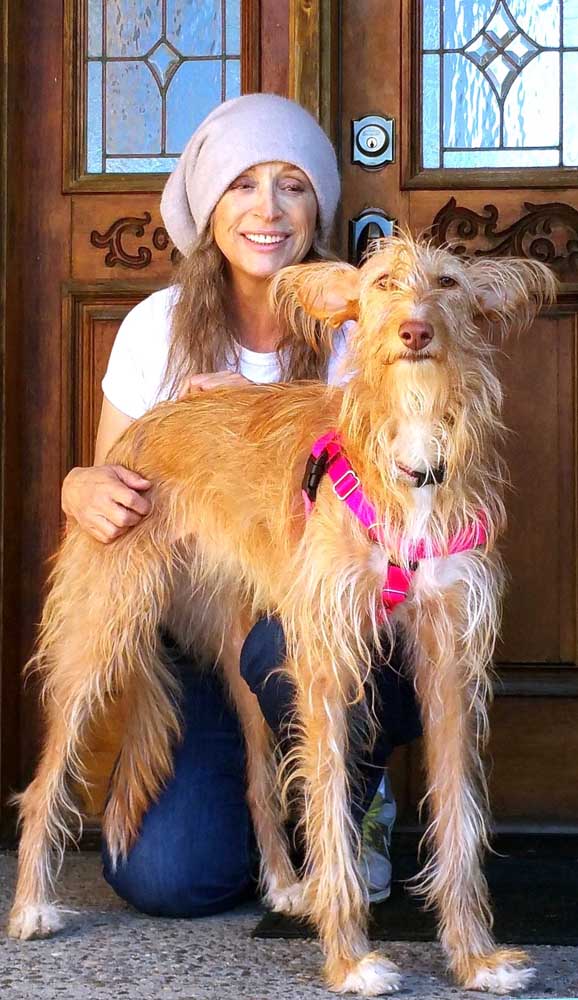Canine Corner
Published 9:47 am Saturday, February 20, 2021

- Rain Jordan and Dahlia.
Much has been made of the fact that, as a result of sheltering in place long-term, many have acquired a new puppy. That’s because so many of us found ourselves suddenly with a lot of at-home time on our hands. Apparently, being home alone every day for months upon months in a row creates new homes for needy pups.
One challenge is that eventually, most of us will need to start leaving home again. What, then, will happen to our canine loved ones? Many of them, now accustomed to having us home all day every day, will naturally experience this constant companionship as normal. It will also be natural that when we eventually go back to work and social life, these pups may panic.
Is suffering inevitable? While no one escapes life without some degree of discomfort, we can reduce the likelihood that our pups will suffer after the pandemic if we start preparing them long before they have to be alone. We can do this by slowly, methodically desensitizing them to being alone. It’s an incremental process that is best begun before there is any problem or risk of problem. Depending on your dog, you might begin with just stepping outside your door for a few seconds every day, or several times a day, then returning to your pup inside. Just before you step out, say “I’ll be back.”
Your saying these words and keeping your word every time will gradually teach the dog that the phrase “I’ll be back” means that you are leaving but that she can count on you to return, that there’s no need to panic. The phrase becomes a signal that lets the dog know your leaving is only temporary.
Once the pup shows absolutely zero distress or concern about your leaving for that short duration of just a few seconds, begin adding seconds, then minutes, working your way very slowly up to the duration you will eventually need — but never adding duration before the pup is ready to handle it, and never too long a duration at once.
Any time the pup shows any sort of stress signs related to your leaving, go back at least one step in duration and redo until you are absolutely sure the pup is completely happy with that duration. Then, when you’re ready to add more time, do so in only very tiny increments. Instead of adding 30 minutes to a 30-second duration, add just a few extra seconds. Repeat this process every time you add duration, in similarly small increments until you get to the desired duration with your dog still completely happy. Each increment is a baby step. Take many baby steps, and only baby steps.
Some people call the process “alone training,” and some people do it right away, every time they bring home a new dog. It is wise to do so, even if you don’t work outside the home. That’s because at some point, you will have to go out, and the last thing you want to find when you return is that your dog has broken a window trying to follow you and now is on the lam. Canine separation anxiety occurs sometimes even if the caregiver never leaves the dog for more than a moment or so at a time, so you might as well give the pup positive, comfortable experiences with being left alone even if the pandemic didn’t much change your schedule.
Whatever you do, make sure to keep your training and preparations positive. Scolding, yelling, or any other negative emotions or behaviors, and any sort of corrections, can result in your dog developing more negative associations, which is where undesired behavior often is rooted. This is true even if you think the dog doesn’t know you’re upset because you haven’t said anything to him.
But are you frowning? Stomping? Slamming a door? Studies have shown that dogs read our facial expressions and body language. “Smile when your heart is breaking” might be an annoying platitude in the context for which it was written, but for helping your dog feel safe and comfortable, it’s a really good idea to emit happy, calm signals — auditory as well as visual.
A dog whose caregiver addresses her softly and kindly — even and especially when the dog’s behavior upsets the caregiver—is much less likely to develop new problem behaviors and much less likely to escalate established problem behaviors.
The resolution is always this: Train with kindness, and train before the training is needed.
Rain Jordan is a certified canine behavior consultant and dog trainer, a fearful dog expert, and the author of several books, including “Such Small Hands: An Anti-Aversives Primer” and the children’s book “The Dog Who Couldn’t Be Petted.” Visit her at www.ExpertCanine.com.





